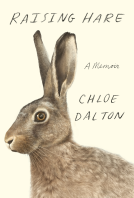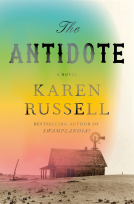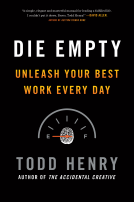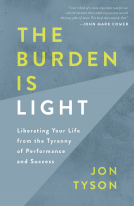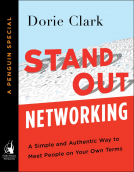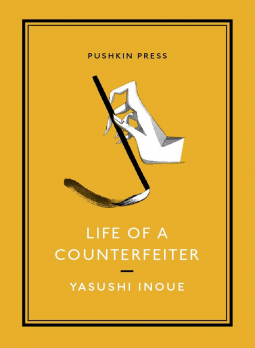
Life of a Counterfeiter
by Yasushi Inoue
This title was previously available on NetGalley and is now archived.
Send NetGalley books directly to your Kindle or Kindle app
1
To read on a Kindle or Kindle app, please add kindle@netgalley.com as an approved email address to receive files in your Amazon account. Click here for step-by-step instructions.
2
Also find your Kindle email address within your Amazon account, and enter it here.
Pub Date Mar 10 2015 | Archive Date Jan 14 2015
Steerforth Press | Pushkin Collection
Description
These three luminous, compassionate tales showcase the mastery and exquisite talent of one of Japan's most beloved writers.
Pushkin Collection editions feature a spare, elegant series style and superior, durable components. The Collection is typeset in Monotype Baskerville, litho-printed on Munken Premium White Paper and notch-bound by the independently owned printer TJ International in Padstow. The covers, with French flaps, are printed on Colorplan Pristine White Paper. Both paper and cover board are acid-free and Forest Stewardship Council (FSC) certified.
Advance Praise
"The Hunting Gun and Life of a Counterfeiter complement each other nicely as a pair. Delicate and powerful on their own, taken together the two works form a haunting, sensitive meditation on memory as well as a wonderful introduction to a master sorely underappreciated in the West." - Music and Literature
"Taut, probing style and Proustian preoccupation with memory were there from the beginning of his fiction career. . . . Inoue depicts in admirably straightforward prose the roiling waters of love, marriage, passion, and the effects of the passage of time on all three, as in his evocation of a match whose light has gone out. . . . Inoue’s characters always are slaves to their fates. It’s a testament to his poetic imagination that he compels us to follow them avidly as they slide forward through time, transforming as they go into creatures of memory." - Jon Sobel, Blogcritics
Marketing Plan
US-based publicist to cover North American market
Targeted mailing of advance copies
Wide mailing of press release
Target Consumer:
Fans of Inoue's The Bullfight
Readers interested in Japanese culture & literature
Readers of short stories
Collectors of Pushkin Collection titles
Available Editions
| EDITION | Other Format |
| ISBN | 9781782270027 |
| PRICE | $18.00 (USD) |
Average rating from 7 members
Featured Reviews
 Reviewer 8739
Reviewer 8739
One of the dominant characteristics of Yasushi Inoue’s rhetorical style in “Life of a Counterfeiter and Other Stories” (Pushkin Press; 144 pages; $18) in is his use of “hedging” phrases, such as “for some reason,” “I’ll never know” and “I may simply be reading too much into things.”
These phrases could be interpreted as creating a narrator who is so fraught with uncertainty that he can only suggest things with modesty rather than declare them with authority.
These stories — written after World War 2 in the early 1950s, but often looking back through the haze of memory at events that took place long before and during the war — can then be seen as a reaction against the kind of narrative certainty about Japan’s prominence in the world that led the nation into its disastrous overreach in China, Korea, and South East Asia. In that sense, his narrative hedging can be seen as an attempt to be precise about the meaning of things that can’t be known.
That’s why in the odd, charming story “Life of a Counterfeiter,” the narrator tells us he has been failing to complete a biography of an acclaimed artist, while he gives us a biography of a minor character in that artist’s life. In a way, the narrator’s failure to write about the great and popular artist can be seen as a rejection of a kind of grand narrative. Instead, he focuses his story on a man who existed in the shadow of the great man, a man named Hōsen who had been a friend of the great artist in their youths, but who turned to painting and selling counterfeit artwork attributed to the great artist.
The narrator’s fascination with this character leads him to discover that the counterfeiter, later in life, became so enthralled with fireworks that he made and sold them illegally.
In one of the most poignant moments of this collection of stories, the narrator encounters a World War 2 veteran two years after the war had ended who, before the war, had spent countless hours learning about fireworks from Hōsen and had helped him put on the biggest displays of fireworks in Hōsen’s career.
Hōsen, at the time an old man, was so engrossed in making sure the fireworks went off in rapid succession that he remained hunched over as he moved from one launcher to the next, without ever having time to see the display himself. The narrator writes, “Hōsen, too, must have been in that same hazy state, and heard the cheering for the first time as an echo coming faintly to life inside him, once the display was over.”
That sense of a moment having the power to come to life inside someone, even through the process of memory, is a striking moment of the power of looking back, of seeing the value in such small moments.
A similar process of memory excavation, of reassessing past assumptions and finding new ways of valuing things, also occurs in the story “Reeds,” in which the narrator recalls various fragments of memory that he often fails to make sense of, until he dwells into a moment when he was three or four and remembers seeing a young woman and man making out by a lake. They weren’t his parents, so who were they?
He learns that the woman was likely his Aunt Mitsu, who died at age 20 when the narrator was just a boy and who, he had always thought in his youth, was a bad person. But as an adult, and as he learned more about her — about her being flirtatious with men, of getting pregnant, and of marrying a man who wasn’t her child’s father — the more he thought of her as someone who wasn’t bad, but as someone whose desires were typical, but her passion for life and vitality actually made her unique and special.
In that sense, “Reeds” is more of a story about how in scouring one’s memory, a person can experience through the briefest of fragments a radical and powerful change in their attitudes and judgments about others.
The final story in this short, entertaining collection, “Mr. Goodall’s Gloves,” also delves into the power of memory in a more direct way: the narrator encounters two things (a painting and a gravemarker) that offer him the occasion to reflect upon the person he knew as his Grandma Kano, a woman who raised him in his school boy years and a woman who was his great-grandfather’s mistress. Now that’s an interesting tale.
Knowing that Inoue had worked as a newspaper reporter (as does the narrator of these stories), I can’t help but be reminded of one of the more common axioms of former journalists who turn to writing fiction: tired of being limited to writing about facts in journalism, these writers turn to fiction to write about truth.
Furthermore, one of the main truths Inoue delves into is the power of partially gleaned moments, poorly remembered events, and ambiguous relationships, of how snippets of memory can test the limits of one’s own knowledge and yet can be rich enough to reveal something unexpected and important out of something that had been hidden. By working in this realm, Inoue’s “hedging” then comes across as a necessarily different mode by which he can claim authorial power with these deeply satisfying stories.
That the richness of Inoue’s storytelling shines through in this collection is a testament to the powerful translation by Michael Emmerich. For fans of Japanese literature, this book is a worthy addition to your library.
 Susan D, Reviewer
Susan D, Reviewer
In this collection of three short stories, Yasushi Inoue has presented a subdued world of pre- and post-World War II Japan through the lives of fairly ordinary people--well perhaps ordinary is overstating a bit. Using writers (biographers, journalists), he investigates the details of individual lives in small towns far from the center of city life.
In the title story, a journalist has been commissioned to write a biography for the anniversary of a famous artist's death. He has already missed the designated date and as the 13th anniversary approaches, he knows he will miss that deadline also. But why? Because he has become sidetracked in his search for knowledge of this great man's life and found himself caught up in the life of another man, connected yet not intended to be part of the book. A man he finds very interesting. His investigation of this man is triggered by memories of everyone he talks to, works of art hanging on walls.
The other two stories also involve trips away from the city, travel to the countryside, visual memories triggering thoughts of people long gone from the narrators' lives but somehow begging to be remembered.
While initially my response to the stories was one of relative interest without enthusiasm, the 2nd and 3rd stories brought home the multi-layered themes more completely and more lyrically for me than the did "Life of a Counterfeiter". Ultimately, I found the stories to be about memory, relationships, people, places, landscapes. Simple but more layered than I originally realized.
From "Reeds":
As I read this article, a scene rose up in my mind's eye of a father and a boy sitting together in a room in a temple lit by soft winter sunlight, each holding a fan of cards, concentrating on a game of picture-
matching
Was this memory real? or the place? or the game? The game itself leads to some fascinating writing.
they had shared, but the fact that the boy had only three cards made this tricky....
In N.'s case, an extraordinary disruption of his life had stolen his memory, leaving him only those three cards, but to some extent we are all in this position:
each of us holds one or two cards that have been in our hands for years, who knows why, while the cards that should be paired with them have disappeared,
instilling in us the desire to try and learn, through our own games of picture-matching, which particular section of that larger design they might make up.
The final story, Mr Goodall's Gloves, also works with memory and a very strong sense of place and visual recall...questions of whether this vision is accurate followed by attempts to verify the early childhood memory.
These stories were all originally published shortly after World War II.
I do recommend this book for those who enjoy short stories of subtlety and also the element of Japanese customs and codes of behavior.
A copy of this book was provided by the publisher through NetGalley for the purpose of an honest review.
 Douglas K, Media/Journalist
Douglas K, Media/Journalist
Yasushi Inoue (1907-1991) was a prolific Japanese writer of fiction, poetry and essays. His stories are in the first person, an autobiographical narrative style. It is a considered, gentle pace, logically ordered fiction. The first and longest story – Life of a Counterfeiter tells of the narrator’s tardiness in tackling the biography of an artist he has been tasked to do by the dead artist’s family. The errant biographer, however, gets sidetracked into investigating the life of a counterfeiter (and illegal firework maker!) who faked paintings by the artist. Reeds is a story about childhood memory and how it is frustratingly impossible to be certain of fragmentary and intangible memories of one’s childhood – how can you be sure of their truth and accuracy, or are they just the accumulated result of attributes and fantasy over the subsequent years? Mr Goodall’s Gloves is also about memory and the past – the narrator’s recollection of times with Madame Kano, who acted as a loving grandparent to him, and he looked to uncover the past and find some truth. You certainly would not read Inoue for a pacy, thrilling narrative – if that is what you desire. But they are intelligently observed tales of elements of a life, in a Japan from earlier in the twentieth century that is alien, but also recognisably and essentially human.
 Marcheto A, Reviewer
Marcheto A, Reviewer
“Life of a Counterfeiter”, the longer piece in this book, tells the story of a frustrated painter who will finally succeed in creating beauty and gaining some notoriety thanks to a complete different form of art. This is a beautiful and moving story, slow but full of details and nuances, written with a fluid and straightforward style, but dealing with deep and complex feelings and matters: art, friendship, frustration, failure… And although this story was my favorite of the three compiled in the book, the other two were also a pleasure to read. Being the first book I’ve read by Yasushi Inoue, it has turned out to be a really pleasant surprise.
